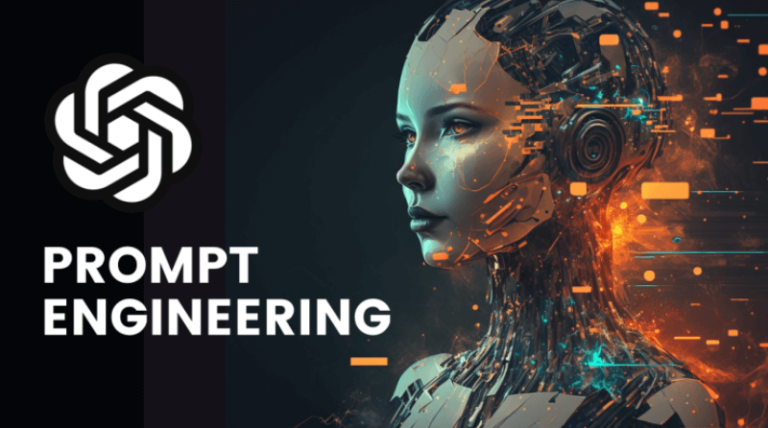AI Lead Generation Explained
AI Lead Generation refers to finding and attracting potential customers with the help of AI tools. An AI system is much more efficient at data analysis from various sources, saving the time of the sales and marketing teams in the company.
AI technology can help to find leads and qualify them, create profiles of the customers, personalize the messages, follow up the lead, analyze data, and Lead scoring. This blog discusses the ways to use AI tools for Lead generation and how AI Lead Generation can outperform traditional Lead Generation.
Table of Contents
- What is Lead Generation?
- How to generate Leads?
- Drawbacks of Traditional Lead Generation
- AI-powered Lead generation
Ad Campaigns
What is Lead Generation?
In simple words, Lead is the contact information or demographic information of a customer interested in a specific product or a service. When a company launches its product or service, it needs to generate leads. Lead generation is the job of the marketing team to gain the interest of the consumer in buying the product or the service.
There are different types of Leads:
- Information Qualified Lead: It is also called “cold lead”, at this stage the company needs to provide helpful information relevant to the query of the customer. The information is provided in exchange for details like name, mail ID, and location.
- Marketing Qualified Lead: Such leads are called warm leads and are the people who show continuing interest in the product.
- Sales Qualified Lead: Also known as hot leads that are willing to buy the product.
How to generate Leads?
Different methods could be used in combination to generate Leads:
- Promotional Tools:
The choice of promotional tools depends on the budget of the company. Promotion can be done through social media posts or pay-per-click ads on Google. Promotion helps to create awareness about the presence of the product/service that solves the problem of people.
- Targeting Audience:
Understanding the mindset of the audience to target potential customers helps to generate more leads with less time and effort.
- Content Creation
Providing Useful content is another important aspect to consider for Lead Generation. Advertisements can lead people to informative blogs about how to use products or services. Videos on YouTube could be another effective way to generate leads.
- Subscription Forms
Placing subscription forms on websites or blogs can help turn prospects into leads.
- Lead Magnets
Marketers make use of an irresistible offer to the prospects enabling them to access some exclusive information in a video guide or tool kit in exchange for the contact details.
- Blogging
Writing interesting articles that link with the products to get the attention of beginners can generate more leads. Timely updating of the blogs and the addition of cases where the company helped people solve a problem could prove to be effective as well.
Drawbacks of Traditional Lead Generation
The traditional methods of Lead Generation employ marketing and sales staff to reach the audience. This process is not only time-consuming but also has several other drawbacks:
- Customization is limited: The traditional marketing method follows a one-size-fits-all approach. However, in the age of customized content, a prospect may soon lose interest due to a lack of personalized touch.
- Pricey: For traditional marketing, making charges, distribution charges, and standard ads like TV commercials and billboards in much higher in comparison to a digital advertisement.
- ROI measurement is difficult: It gets difficult to measure the return on investment, thus making it more difficult to improve.
- Environmental Concerns: The current times need us to be more conscious about environmental health issues. Printing ads on paper increases waste to recycle which can be avoided by a digital ad.
- Lack of Flexibility: Once the ads are made, it is not easy to change them to make them relevant to changing times in this fast-paced world.
- Limited Interaction: In the case of traditional marketing, the customer cannot give feedback right away, thus limiting the interaction with the audience.
- Avoidance: The traditional ads are played too often and due to lack of personalization bores the audience, resulting in skipping an advertisement.
- Less number target audience: The rise of digital platforms has shifted the audience from TVs and Newspapers to mobile phones or laptops. In such a scenario, traditional marketing means prove to be outdated.
AI-powered Lead Generation
The AI tools have been proven to combat the drawbacks of the traditional marketing methods.
-
Lead scoring and qualification:
Depending on the engagement level of the lead and the probability of becoming a consumer, leads are scored. This makes sorting the leads an easy process to concentrate on the potential ones. The parameters like level of engagement, website communication, and previous purchases could be used to score the leads. The Leads having the highest scores are the ones having a high chance of being converted.
Machine Learning tools can be used to create an Ideal Customer Profile to find leads. The AI tools search for consumers and businesses suitable for your demographic across the web. It generates a list of qualified prospects that can be used as a foundation for marketing and sales.
-
Personalization of Content
AI makes use of data to produce customized promotional offers and messages for every Lead. AI studies the choices, demands, and behavior patterns of the lead and generates hyper-personalized content, thus increasing the interest in the brand which may ultimately lead to conversations.
The marketing emails, blog posts, or product advertisements can be personalized. The algorithm understands the best platform and time to contact the Lead to improve engagement and turn them into customers.
-
Use of Chatbots and Virtual Assistants:
Have you noticed that when land on a brand’s website, a message window of a virtual assistant pops up? Well, businesses make use of AI-powered chatbots to promote interaction with consumers. Such chatbots allow real-time contact with people to provide rapid responses to their queries. This enhances consumer engagement.
As the number of interactions increases, bots can intelligently respond to inquiries in the future. Using a chatbot reduces the waiting time for a consumer to receive a reply.
-
Data Mining and Identification of Lead
AI algorithms can be employed to segment the Leads and gain key insights from the data collected. They make it an effortless process to organize huge chunks of data. As opposed to this, analyzing data manually can be a laborious task and could be prone to human errors.
For Data mining, clustering algorithms are used to assemble similar data elements depending on their characteristics. Classification algorithms are incorporated to identify lead. These algorithms can evaluate multiple features and foresee any probability of conversion. As these algorithms give every lead a binary result, businesses can then manage lead nurturing activities.
-
Lead Sourcing and Enrichment of Data
AI tools can source leads from different platforms and databases across the web. They extract the essential data from social networking platforms using algorithms. Such automated processes reduce manual efforts and utilize them to expand lead-generating initiatives. It enables businesses to collect leads fitting the ideal customer profile when search parameters are specified. Besides this, AI tools are used to collect additional data from various sources to improve the existing lead data and enrich the database.
- Prediction for Lead Conversion
AI models make it possible to analyze the real-time behavioral patterns of the former leads and previous conversations with the company for scoring and ranking the prospects. By analyzing real-time data, it can predict the time required for closing a business. Convolutional Neural Networks turn this ranking of leads process into a simple one by operating in the background.
Algorithms like logistic regression, decision trees, random forests, and neural networks are the data train predictive models that can figure out the patterns in the old data and present the probability of lead conversion on its basis.
-
Sales Forecast and Pipeline Management
Accurate sales forecast is significantly beneficial to businesses to plan resources and set goals. Pipeline management makes sure the leads move through the sale process conveniently. In comparison to traditional forecasting techniques, AI models function at par as they consider various variables and the intricate relationship between them. The algorithms can efficiently identify bottlenecks and can forecast the probability of conversion at every phase. AI aids in speeding up the pipeline management process and reduces the sale cycle time. AI tools offer insights and valuable recommendations, thus aiding in enhancing conversion rates.
-
Lead Attribution and ROI analysis
AI can play an important role in lead attribution and ROI analysis by employing algorithms and data analysis techniques. It can precisely correlate the leads to marketing touchpoints and the results of marketing efforts.
Using an AI algorithm, the prediction of return on investment for various marketing campaigns is feasible. This allows the businesses to assess the different marketing possibilities, spot a high-potential marketing campaign, and allocate resources accordingly. Real-time analysis empowers marketers to improve their plans and boost the results of their marketing campaigns.
- External Data sources for identification of Leads
The potential of AI can be exploited to understand the leads in a better way and modify their methods of targeting by leveraging external data. This can result in high conversion rates.
The AI algorithm studies data published in business publications, press releases, and social media to determine the market prospects. By keeping track of external data sources, businesses are timely updated about the changes in the choice of consumers or the actions of the competitor.
Using AI tools to extract external data allows for tracking leads in real time. This proves to be of key importance for businesses as they can engage leads with current and useful content. Thus, maintaining the flexibility and adaptability of businesses in the volatile market.
FAQ
1. How is AI used in lead generation?
AI is used to collect real-time data on potential leads; it monitors the active hours of the leads and studies their behavioral patterns. Such crucial data points help businesses customize the content for the audience and make it relevant to the leads.
2. Can I generate leads with AI?
Of course, you can easily generate lead using AI lead generation software.
Some AI lead generation tools include Customers.ai, Albert, CoPilto,ai, Seamless.ai, among others.





